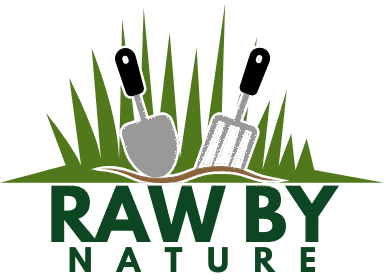Gardening is more than just a hobby; it’s a journey into the heart of nature where each plant tells a story and every garden bed becomes a canvas. For those just starting out, the world of gardening can seem as vast and intricate as a lush, untamed forest. Yet, whether you’re a novice eager to cultivate your first blooms or a seasoned gardener refining your craft, the right tools can make all the difference between a garden that merely survives and one that truly thrives.
Understanding the essential tools that every gardener needs is the first step to transforming your outdoor space into a flourishing sanctuary. This article will guide you through the must-have outdoor gardening tools, helping you select the perfect companions for your gardening adventures. From the sturdy trowel that turns soil with ease to the precise pruners that shape your foliage, we will explore each tool’s unique role and how they simplify the gardening process.
In embarking on this green path, you’ll gain insights not only into the tools themselves but also the wisdom of using them effectively and safely. Whether you’re preparing to plant your first seeds or looking to upgrade your existing collection, our guide will equip you with the knowledge to cultivate with confidence and joy. By the end, you’ll feel empowered and ready to embrace each day in the garden, armed with the essential tools to nurture your little corner of the world.
Choosing Basic Hand Tools

When starting your gardening journey, having the right hand tools is essential for success. A sturdy trowel is a must-have for any gardener, making it easier to dig small holes, transplant seedlings, and mix soil.
Pruning shears are another basic tool, crucial for maintaining the health of your plants by removing dead or damaged stems. Choose a pair with sharp, stainless steel blades and comfortable grips to minimize hand fatigue during extended use.
For weeding and soil aeration, a hand fork is invaluable, allowing you to break up compacted soil and remove weeds without disturbing your plants. Ensure the fork has strong, rust-resistant tines that can withstand regular use.
Beginners should also consider investing in a garden knife, known as a hori-hori, which is versatile for cutting, digging, and measuring planting depth. This tool’s serrated edge makes it particularly useful for slicing through tough roots and dense soil.
Essential Digging Equipment

Digging is fundamental to gardening, and having the right tools can make this task much easier. A sturdy garden spade is essential for turning soil and planting large plants. Opt for a spade with a sharp edge and a comfortable handle to reduce strain on your back and arms. When selecting a spade, consider one with a stainless steel blade for durability and ease of cleaning.
A garden fork is another indispensable tool, useful for breaking up compacted soil and incorporating organic matter. Its tines can penetrate the ground more efficiently than a spade, especially in hard or rocky soil. For beginners, a fork with four straight tines and a D-shaped handle offers good leverage and control. Experienced gardeners might also appreciate a fork with slightly curved tines for more specialized digging tasks.
To tackle smaller, more detailed digging jobs, a hand trowel is a must-have. This tool is perfect for planting bulbs, seedlings, and other small plants. Look for a trowel with a comfortable grip and a narrow blade to easily work in tight spaces. Beginners should choose a lightweight model to avoid fatigue, while more experienced gardeners might prefer a heavy-duty trowel for tougher soil conditions.
Lastly, having a garden hoe can help manage weeds and prepare the soil surface. This tool is especially effective for cutting through the roots of stubborn weeds and creating furrows for planting seeds. A hoe with a long handle allows you to work comfortably without bending over too much. Consider a stirrup hoe for its efficiency in slicing weeds just below the soil surface, minimizing disruption to your garden’s ecosystem.
Pruning Tools for Beginners

When starting your gardening journey, having the right pruning tools is crucial for plant health and growth. A good pair of bypass pruners is indispensable for making clean cuts on live plant tissue, ensuring minimal damage and promoting healing.
Additionally, consider investing in a pair of anvil pruners for tougher, dead wood. These are designed to cut through thicker stems and can make pruning shrubs and small trees much easier.
For larger branches, a pruning saw is essential. These saws are specifically designed to cut through wood with ease and precision, maintaining your plants’ structure without causing undue stress.
Always remember to keep your tools clean and sharp to prevent the spread of diseases. Regular maintenance, such as oiling the blades and checking for rust, will extend the life of your tools and improve their effectiveness.
Finally, familiarize yourself with the basic pruning techniques to ensure you’re pruning correctly.
- Remove dead, damaged, or diseased wood first.
- Make cuts at a 45-degree angle, just above a bud that faces outward to encourage growth in the desired direction.
These simple practices will keep your plants healthy and thriving.
Watering Tools and Accessories

Watering is a fundamental part of gardening, and having the right tools can make a significant difference. A basic garden hose with an adjustable nozzle is essential for reaching every corner of your garden and controlling water flow. This flexibility allows you to water deeply and thoroughly, promoting strong root growth and healthier plants.
For those with smaller gardens or container plants, a watering can offers precise control. Choose one with a narrow spout for targeted watering, which is especially useful for delicate seedlings or indoor plants. This ensures you can water the base of the plant without wetting the foliage, reducing the risk of fungal diseases.
An excellent addition to your watering toolkit is a soaker hose, ideal for garden beds and larger areas. These hoses provide slow, even watering directly to the soil, minimizing evaporation and runoff. It’s a smart investment for conserving water and maintaining consistent soil moisture levels, particularly beneficial during dry spells.
Advanced gardeners might consider installing a drip irrigation system for precision watering. This system delivers water directly to the plant roots, which can be programmed to meet specific watering schedules. Such systems are invaluable for maintaining an efficient watering routine, especially for plants with varying water needs.
Safety Gear for Gardeners

Gardening is an enjoyable and rewarding activity, but it’s important to prioritize safety while working outdoors. Wearing the right safety gear can protect you from common gardening hazards such as sun exposure, sharp tools, and chemical sprays.
Investing in a good pair of gardening gloves is essential for protecting your hands. Choose gloves that are both durable and comfortable, ensuring they provide ample protection against thorns and blisters while allowing you to handle delicate plants.
It’s also crucial to wear a wide-brimmed hat and sunglasses to shield yourself from the sun’s harmful rays. This not only prevents sunburn but also reduces the risk of heat-related illnesses, especially during long gardening sessions.
Consider using knee pads or a cushioned kneeling pad to prevent knee injuries and discomfort when working at ground level. These can be particularly useful when planting or weeding, as they help reduce strain on your joints and make gardening more enjoyable.
Conclusion: Growing Success with These Plants
In summary, the article highlighted five essential tools to help beginner gardeners cultivate their outdoor spaces, drawing insightful parallels to nurturing healthy relationships. Just as a sturdy hand trowel helps in digging deeper, communication acts as the foundation for understanding your partner. A reliable pruner is akin to setting boundaries, while a garden fork aids in turning over new soil, reminiscent of embracing change. A watering can symbolizes the nurturing love needed to grow, and a wheelbarrow represents the support systems that carry you through tough times.
To strengthen your relationship garden, reflect on these tools and identify areas where your relationship might need a little more attention or care. Start by choosing one “tool” to focus on this week, whether it’s enhancing communication or setting clearer boundaries.
Bookmark this article to revisit these concepts as your relationship evolves. By doing so, you’ll have a handy guide to refer back to whenever you need a gentle nudge in the right direction.
Remember, relationships, much like gardens, require ongoing effort and patience. By applying these insights and nurturing your bonds, you pave the way for a flourishing future together. Embrace the journey, and watch your relationship thrive!


